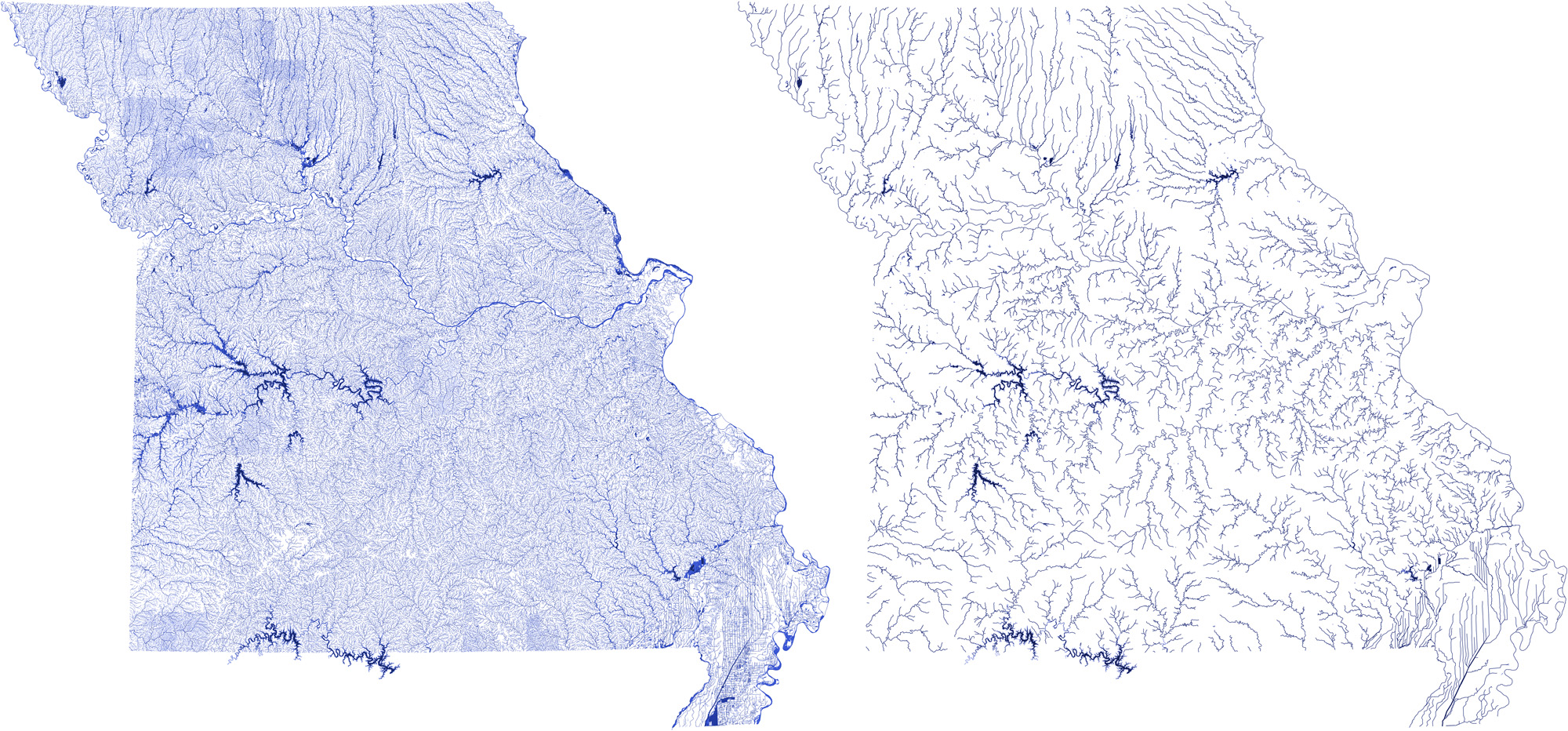What are unclassified waters and why are they important?
More than forty years after passage of the Clean Water Act, Missouri ’s unclassified waters are not even receiving the minimal protections required by the Act. Missouri ’s creeks and streams are critical parts of our large river systems. As feeder streams for our big rivers, they serve as nurseries for young fish, habitats for wildlife, and form an intricate network of flowing water to our major riverways. When these unclassified rivers, streams, lakes, and wetlands are not healthy, our bigger rivers are impacted.

Before 2014, more than 85% of Missouri ’s streams had never been classified, meaning nearly 150,000 miles of streams received inadequate protection from water pollution under Missouri ’s water quality laws. Unclassified streams were generally smaller than Missouri ’s larger, classified water bodies, but their protection is equally important given the disproportionate number of pollutant discharges into these waters. Many lakes and almost all wetlands in Missouri lack classifications as well. In 2014, Missouri adopted the 1:100K rule, referring to the scale of once inch on the USGS map to 100,000 real inches, as the basis for classifying waters of the state. Uses and water quality protections now apply to those streams which are visible on the 1:100,000 map. While we gained ground in water protections, at least 65,000 stream miles; 90,000 acres of lakes and reservoirs; and almost 1,000,000 acres of wetlands remain unprotected.
All waters we want protected Classified waters from 2004-2014

What is MCE doing about unclassified waters?
The classification of a water body is the first step in the Clean Water Act that gives it needed protection from pollution. Classified waters are assigned a designated use and corresponding water quality standards that set the pollution limits necessary to meet the specified use. Under the U.S. Clean Water Act, all waters of the United States have a default designated use of fishable/swimmable—meaning all waters should be clean enough for life to survive in them and for humans to safely come in contact with the water.
The Coalition would ultimately like to see all of Missouri’s waters classified. We are working to push Missouri’s DNR Water Protection Program and the EPA to provide adequate protections for all waters of the state, making them safe for human recreation and aquatic life. The state and the EPA must step up and protect all our waters under the Clean Water Act. MCE supports the Clean Water Protection Rule because although Missouri only applies Water Quality Standards to the waters on the 100K map, we hope it is a step towards getting protections on more waters.

Hi,
I am a teacher at St Clement of Rome School in Des Peres, Mo. I am also a certified MO STREAM TEAM water quality volunteer.
There is a “creek” near our school that does not have a name. I want to see if we can name it as a school. Also, I want to see if I can help the students monitor the water quality of the creek. I have not been able to gain access yet. It seems to be covered in growth and I need to see what property it is on.
Anyway, if you have any ideas or advice, feel free to do so. I am making plans for next year.
Is there a way to name this creek “100K Extent-Remaining Streams” near St. Clement of Rome School in Des Peres, Missouri?
TBLE_NAME H
NHD Y
STNDRD_ID 4,707
WBID 3,960.00
WBID_TXT 3960.00
WATER_BODY 100K Extent-Remaining Streams
WB_CLS C
DS_COUNTY Statewide
US_COUNTY Statewide
HUC_8 Missouri
SIZE_ 90,040.10
UNIT Miles
LEGAL_DS Statewide
LEGAL_US Statewide
AQL_USE Y
CDF_USE N
CLF_USE N
DWS_USE N
IND_USE N
IRR_USE Y
LWW_USE Y
SCR_USE Y
WBCA_USE N
WBCB_USE Y
HHP_USE Y
PERM_ID {A2D403D8-A050-4DB8-9072-87B6E4F73640}
EVENTDAT 11/28/2017, 6:00 PM
REACHCODE 07140101001388
REACHSMDAT 3/18/2012, 7:00 PM
FMEASURE 0.00
TMEASURE 100.00